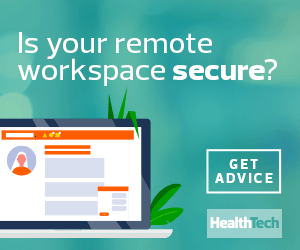The COVID-19 pandemic has dramatically shifted the ways in which patients access medical care. An Epic Health Research Network study found that between mid-March and mid-April, 2020, telemedicine appointments grew at a rate 300 times greater than during the same stretch of time in spring 2019.
The same study, however, found that despite the massive increase in telemedicine visits, total healthcare visits (both in-person and remote) were down by 50 percent.
Clearly, the barriers to telemedicine and other forms of home-based healthcare did not immediately fall in the wake of the pandemic and concomitant shelter-in-place orders. And while the federal government, state-level governments and insurers loosened some policies to help expand the use of telemedicine during the crisis, more will be required to make telemedicine a robust and reliable form of home-based healthcare in the years to come.
1. Help Patients to Realize the Solution's Potential
A recent survey by Sykes found nearly 42 percent of potential respondents were unfamiliar with telehealth; of those who were familiar and qualified for the survey, only 1 in 5 had directly received care via a telehealth appointment.
Many respondents — more than 40 percent — cited concerns over the quality of care that could be offered remotely.
“In a pandemic, home-based telehealth allows patients to continue getting care without risking exposure to COVID-19,” says Lori Uscher-Pines, a senior policy researcher at RAND who studies telemedicine. “In routine times, home-based telehealth improves access and convenience for patients.”
Convenience, however, has trade-offs. Uscher-Pines points out that when care occurs in a home setting, patients may struggle to find private space away from other family members or may even feel pressured to involve family members in their appointment. Family aside, 36 percent of survey respondents say that they simply prefer to meet with their provider in person.
Still, high satisfaction levels with telehealth services point to a bright future for the solution: Of survey respondents who had already received telehealth care, an overwhelming majority stated that they either already have or would consider scheduling another telehealth appointment in the future. In fact, only 3 percent mention that they wouldn’t consider another appointment.
The study cites the technology’s ease of use of and the quick access to care it provides as two key contributors to the solution’s success.
2. Address the Existing and Potential Infrastructure Challenges
Unlocking the potential of telehealth requires additional patient supports if the shift to home-based telemedicine is to become a standard means of providing care after the critical phase of the pandemic passes.
“We need to improve patient readiness for home-based telehealth through education and IT support, and by providing devices,” says Uscher-Pines.
Unfortunately, even in the absence of a crisis, those who could most benefit from easy remote access to doctors are often also those who lack the resources required.
“Many underserved patients in the U.S. do not have all the necessary ingredients to use these services,” notes Uscher-Pines.
The U.S. Department of Health and Human Services addressed some of the access issues by relaxing HIPAA requirements for telemedicine during the pandemic, which has allowed clinicians to reach patients using the teleconferencing options built into their devices. In the long run, it will be important to create easy-to-use platforms for telemedicine that meet HIPAA regulations — or to instruct patients on the use of compliant software.
“Improved technology can help patients with limited computer literacy navigate these services,” notes Uscher-Pines.
3. Increase Clinician Confidence in Telemedicine
Finally, clinicians will need to have confidence in the care they provide remotely in order to make teleconferencing a durable solution.
“Many providers have transitioned to telemedicine without really having a choice in the matter. In order to continue to operate, they have had to offer these services to their patients,” says Uscher-Pines. “If providers have negative experiences with telehealth services during this period — for instance, if they observe bad outcomes or perceive care to be lower quality — that could impact their willingness to offer it to their patients going forward.”
Uscher-Pines suggests that an important element of increasing clinician confidence in telemedicine as a modality of care will be finding ways to incorporate peripheral devices into remote appointments. With peripherals, patients can capture more data for their caregiver to use in the evaluation of their cases.
The ultimate degree to which telemedicine will be adopted depends on all of these factors, as well as the way it is regulated when the pandemic subsides.
READ MORE: How will telehealth change after the pandemic?
“I believe that telehealth will have a significant and permanent place in the healthcare delivery system going forward,” says Uscher-Pines. “However, whether telehealth comprises 2 percent versus 30 percent of all healthcare encounters in the future depends on what happens with reimbursement and regulation of these services. Right now, payers have taken unprecedented steps to increase access to telemedicine.”
“Whether some or all of the recent policy changes will be rolled back as soon as the COVID-19 pandemic wanes is unknown,” she adds.













